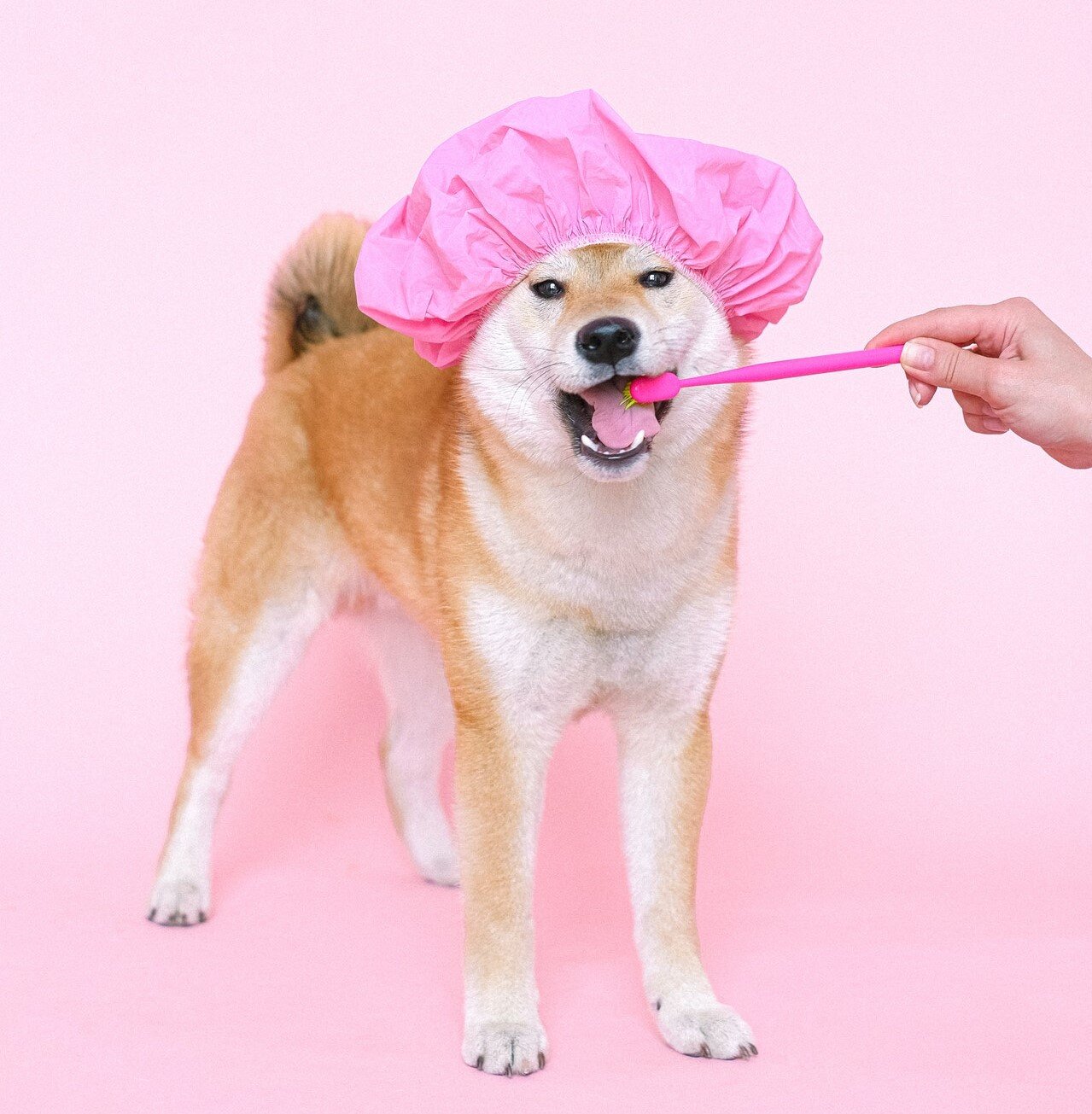Do I Need To Brush My Dog’s Teeth?
By: Dr. Amy See
We know that having a proper dental routine at home is very important for keeping their smiles beautiful and healthy.
But did you know that our pets need regular teeth brushing to keep them healthy and happy as well?
Humans aren’t the only ones that benefit from at-home dental care. Most people don’t realize how important it is to have proper at-home dental care for our pets too.
Just like people, it’s also important for cats and dogs to keep their teeth clean and free of plaque. Otherwise they will develop serious health issues that could affect their health, like we would if we stopped brushing our teeth.
Why Is Dental Care Important For My Pet?
Did you know that studies show that 70-80% of cats and dogs will experience periodontal disease by the time they are about three years old?
Periodontal disease is caused by the build-up of bacteria in your pet’s mouth. This bacteria will cause plaque and tartar to form underneath your pet’s gums.
Over time (in the later stages of periodontal disease) this build-up of plaque and tarter will cause the tissues around your pet’s tooth to decay and become infected.
When this happens, the only remedy would be specialized veterinary dental surgery to cut out the infected tissue and extract the decayed teeth from your pet’s mouth. Because if this bacteria enters your pet’s bloodstream, it can create serious heart, lung, and kidney problems in them.
But research has shown that having a regular dental routine for your pet will keep them from developing a wide variety of dental issues that could lead to such serious health illnesses down the road.
Just like human beings, you cannot ignore your pet’s oral health and skip cleaning their teeth.
But it doesn’t have to be complicated at all. There are a few easy things you can do at home right now that will go far in keeping your pet’s teeth and gums healthy.
Here are a few of our pet-friendly tips:
1. Brush Your Pet’s Teeth Regularly
We get it! Regular teeth brushing is not an easy feat for many pet parents.
But this is the best thing you can do for your pet’s oral health. Cats and dogs are actually not that different from human beings in their need for daily brushing, because this will help prevent the build-up of plaque and tartar that leads to periodontal disease.
By regularly brushing your pet’s teeth, it will go a long ways in preventing tooth decay and serious health issues in the future.
We recommend brushing your pet’s teeth at least two or three times a week for maintaining healthy teeth.
2. Choose the Right Tools
Just like we recommend that our patients choose a toothbrush that’s right for them, it’s important that you choose a toothbrush that’s appropriate for your pet.
There are toothbrushes specially designed for dogs and cats that you can easily find at many pet stores.
There are also finger toothbrushes available for pets who are fearful of having a traditionally shaped toothbrush entering their mouths or they have smaller mouths that cannot fit a regular pet toothbrush.
But if your pet is absolutely resistant to any type of toothbrush, we recommend using a clean piece of gauze wrapped around a finger to clean their teeth. The friction from the gauze will help scrub some of the food debris and plaque forming on your pet’s teeth.
When it comes to toothpaste, it’s important that you buy pet-specific toothpaste. Never use your own personal toothpaste for your pets.
Toothpaste made for humans contain ingredients, such as xylitol, that are toxic to animals and can cause stomach problems. If you have any questions for your pet’s specific needs, feel free to ask your vet for a recommendation.
In addition to brushing, there are also dental treats, chews, and specialized chew toys available that will help reduce the plaque and tartar in your pet’s teeth. But while these alternatives may help promote your pet’s dental health, there is no substitute for daily brushing.
2. Use the Right Technique
The technique behind brushing your pet’s teeth is not unlike brushing your own. Hold the toothbrush at a 45-degree angle and gently massage it in a small circular motion. You may want to focus more attention on the cheek side of your pet’s teeth as that’s where the most tartar tends to accumulate.
3. Stay Aware
Animals can get gum disease too, so it’s important that you are aware of the emergency symptoms that your pet may be experiencing pain or infection.
Call your vet if you notice any of these symptoms in your pet:
Bad breath
Excessive drooling
Facial swelling
Swollen gums
Loose teeth
Lethargy and not wanting to eat or drink
Shaking even when they are not cold
If you notice any of these symptoms, we recommend scheduling an appointment with your vet as soon as possible to see what’s causing them.
While we can’t help keep your pet’s smile in top shape, following the tips above and visiting your vet regularly can do wonders in ensuring your furry loved ones are healthy.
And when it comes to your pearly whites, we’ll be more than happy to see you at my Rolesville dental office anytime. Call us today at (919) 562-8200) to schedule an appointment.


